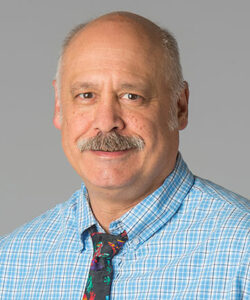St. LukeÂ’s own rehab now paying off
Institute has grown to become largest of its kind in Northwest, pays down most of initial debt
In a little more than a decade, St. Lukes Rehabilitation Institute has improved its fiscal condition from critical to stable and improving, says Gary Smith, the Spokane rehab hospitals chief operating officer.
Along the way, St. Lukes has become the largest free-standing hospital in the Northwest thats dedicated to rehabilitation, treating more patients than any other such center in the state, Smith says.
The 102-bed facility at 711 S. Cowley logged nearly 22,000 patient days in 2007, with an average daily census of 60 patients.
St. Lukes also treated nearly 5,000 people on an outpatient basis with a total of 60,000 outpatient treatments in 2007.
In addition to the 100,000-square-foot, three-level hospital building and 26,000-square-foot medical office building on its main campus, St. Lukes operates two outpatient clinicsone at Valley Hospital & Medical Center, and the other in the Indian Trail Professional Building on Spokanes North Side.
It wasnt that long ago, when St. Lukes underwent a rehabilitation of its own.
St. Lukes, originally an acute care hospital, was closed in 1992 and reopened after renovations were done as Deaconess Rehabilitation Institute, owned by Empire Health Services, which also operates Deaconess Medical Center and Valley Hospital & Medical Center.
At the time, the four largest Spokane-area hospitalsDeaconess, Valley Hospital, Sacred Heart Medical Center, and Holy Family Hospitaleach operated their own struggling rehabilitation programs.
All hospital therapy programs here were losing a considerable amount of money, Smith says.
In 1994, executives from each of the hospitals formed Inland Northwest Health Services to merge portions of their businesses, including their rehabilitation programs, which they believed would work more efficiently through collaboration rather than competition, Smith says.
Through INHS, St. Lukes Rehabilitation Institute was born in 1994, with $30 million in inherited debt.
The concentration of rehabilitation expertise in one program and a major remodel of the rehab center helped bring St. Lukes back to health.
Now, St. Lukes is close to working its way back into debt-free status, with about $3 million in debt as of the end of 2006. We have a very small amount of debt now, Smith says, adding that he expects St. Lukes to be free of debt within two years.
St. Lukes 2006 revenue, at about $40 million, was up 9.2 percent compared with 2005, when revenue jumped 5.3 percent.
Smith declines to disclose 2007 revenue figures, which havent been audited yet, but says revenue has continued to grow.
The institute employs about 580 full- and part-time employees, and has a medical staff of seven physicians and 80 registered nurses, 53 of whom are certified in rehabilitation.
Depending on where they are needed, 80 to 100 physical, occupational, and speech therapists are based at Sacred Heart, Deaconess, and Valley Hospital.
They are St. Lukes employees who work at those facilities under contract, Smith says.
Restoring independence
St. Lukes generally serves patients from throughout Eastern Washington, North Idaho, and western Montana. We even see an occasional Canadian, Smith says.
The rehab hospital treats patients who suffer from disabilities due to injury or illness. Its mission is to help patients regain function and independence. The hospital has three inpatient units: one treats stroke victims, one treats patients with traumatic brain injuries, and the third treats patients with spine and neurological damage, including factures and amputations.
Patients who are admitted to St. Lukes generally are transferred there from acute-care hospitals once a team of case managers determines a patient can tolerate three hours of rehabilitation exercises a day, Smith says.
The average inpatient stay at St. Lukes is 14 days, although a one-month stay is typical for a stroke victim and a two-month stay is typical for a patient with a spinal cord injury. Hospital stays for patients whove undergone joint-replacement surgery are typically shorter than the two-week average stay.
Dr. Stefan Humphries, medical director at St. Lukes, says the goal of the institute is to improve patients quality of life.
In the last five years, the hospital has discharged up to 95 percent of its patients ready to function independently in the community, consistently maintaining its discharge rate up to 2 percentage points above the national average, according Med Tel Outcomes LLC, a national patient data collection service.
Humphries attributes much of St. Lukes success to the collaborative process that begins before patients are admitted into St. Lukes.
We use a team approach to realize the best outcomes, he says. The goal is to improve the patients quality of life physically, socially, and psychologically.
Physicians, nurses, therapists, counselors, and dietitians combine their collective expertise to meet the needs of each patient, he says.
Collaboration and innovation
Before Humphries came to St. Lukes nearly three years ago from Colorado Springs, Colo., where he held a similar position at Health South Rehabilitation Hospital, he worked in areas where there were three or four rehabilitation providers that were in intense competition, with little collaboration, he says.
Here, there are all kinds of opportunities to build programs and be innovative, he says.
St. Lukes has a large physical therapy gym and two smaller gyms outfitted with exercise equipment.
An aquatics rehabilitation program thats used by an average of 1,500 patients a month is centered around the hospitals pool and has overflowed into other Spokane-area swimming pools, Smith says.
The hospital also has two apartment units, which some patients are allowed to use in the transition between inpatient care and their return home. It eliminates some of the fear patients and their families have about going back home, Smith says.
Two residential-sized kitchens are available at the hospital to encourage patients to practice everyday-living activities, while at the institute.
Maintaining function
St. Lukes works with the Washington state Department of Labor and Industries to help people whove been injured at work to regain their strength.
We assess patients levels of function and help adjust work conditions to get them ready to go back to work again, Smith says.
St. Lukes employees visit job sites to help employers prevent injuries from recurring, and track injured workers to ensure they follow appropriate programs.
St. Lukes offers a specialized outpatient program, called Medically Directed Wellness, which is a medically monitored exercise and education program that emphasizes disease prevention and management. It can include heart and lung rehabilitation, cancer fitness recovery, and asthma management.
St. Lukes also manages a pediatric outpatient program in which about 280 children are actively involved, Smith says.
While Smith says there have been inquiries from companies looking to buy St. Lukes, Humphries says theres no desire to sell it.
A not-for-profit platform gives us unique opportunities to serve the community, Humphries says, adding for-profit companies have an obligation to serve shareholders.
Contact Mike McLean at (509) 344-1266 or via e-mail at [email protected].
Related Articles


_c.webp?t=1763626051)


